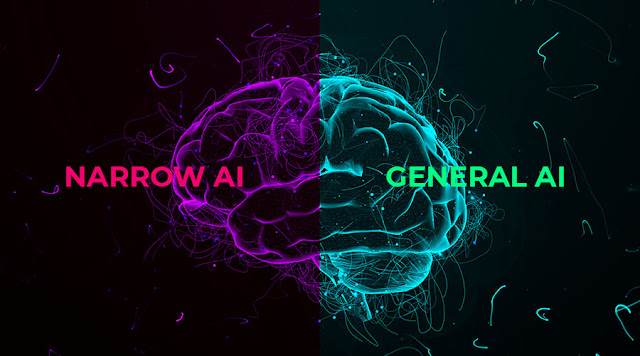Artificial Intelligence (AI) and Machine Learning (ML)
Introduction
Artificial Intelligence (AI) and Machine Learning (ML) have emerged as revolutionary technologies that are transforming industries and reshaping the way we interact with technology. In this article, we will explore the fascinating concepts of AI and Machine Learning, their real-world applications, the various types they encompass, and the diverse uses they offer to society. Also learn about Ai Vs Machine Learning.
What is AI?
Artificial Intelligence, commonly known as AI, refers to the development of computer systems that can perform tasks requiring human-like intelligence. These tasks encompass problem-solving, reasoning, learning, perception, and decision-making. AI systems are designed to mimic human cognitive functions, enabling machines to adapt, learn from experiences, and continually improve their performance.Understanding the applications of AI is crucial, but it’s equally important to grasp the security risks they pose. AI systems, when not properly secured, can become vulnerabilities in themselves. For a comprehensive guide on addressing these security challenges, refer to WIZ guide to AI security.
Applications of AI:
1. Natural Language Processing (NLP):
AI-driven NLP systems empower computers to comprehend, interpret, and generate human language.
2. Computer Vision:
AI-driven computer vision systems facilitate machines in understanding visual information from images and videos. Notable applications include facial recognition, object detection, autonomous vehicles, and medical image analysis.
3. Robotics:
The amalgamation of AI and robotics leads to the development of intelligent robots capable of handling complex tasks in diverse fields, including manufacturing, healthcare, and logistics.
4. Expert Systems:
AI systems known as expert systems emulate human expertise in specific domains and aid in decision-making, problem-solving, and diagnosing complex issues.
5. Gaming:
The gaming industry heavily relies on AI to create challenging computer opponents, dynamic game environments, and adaptive gameplay.
Types of AI:
1. Narrow AI (Weak AI):
Narrow AI refers to AI systems designed for specific tasks with limited functionality. They excel in a particular domain but lack general intelligence.
2. General AI (Strong AI):
General AI aims to possess human-like intelligence, with the ability to understand, learn, and apply knowledge across various domains. However, achieving General AI remains a theoretical challenge.
Uses of AI:
1. Personal Assistants:
AI-powered personal assistants like Siri, Google Assistant, and Alexa help users with tasks, searches, and reminders.
2. Virtual Customer Support:
Chatbots and virtual agents provide customer support, answer queries, and handle routine tasks in various industries.
3. Healthcare Diagnosis:
AI is used to analyze medical data and assist in the diagnosis of diseases, helping healthcare professionals make informed decisions. AI is used to analyze medical data and assist in the diagnosis of diseases, helping healthcare professionals make informed decisions. Additionally, digital marketing agencies offer specialized medical practice marketing services that help clinics and doctors effectively reach their target audience online, optimizing patient engagement and growing their practices.
4. Image and Speech Recognition:
AI-based image and speech recognition systems are used for security, authentication, and accessibility purposes.
5. Predictive Maintenance:
AI is used to predict equipment failures and optimize maintenance schedules in industries like manufacturing and aviation.
What is Machine Learning?
Machine Learning, a subset of AI, focuses on developing algorithms and statistical models that enable computers to learn from data without explicit programming. As AI systems become more complex, effective LLM orchestration is essential to manage and coordinate large language models, ensuring seamless integration and performance within AI-driven applications.
Applications of Machine Learning:
1. Predictive Analytics:
Machine Learning algorithms analyze historical data to make predictions about future events or trends, assisting businesses in decision-making and risk assessment.
2. Recommender Systems:
ML-powered recommendation engines suggest products, services, or content based on users’ preferences and past behavior, enhancing user experiences in e-commerce and content streaming platforms.
3. Fraud Detection:
Machine Learning models play a crucial role in detecting fraudulent activities in financial transactions and online platforms.
4. Healthcare:
ML is extensively used in medical diagnosis, drug discovery, personalized treatment plans, and medical image analysis.
5. Autonomous Systems:
Machine Learning enables the development of autonomous vehicles, drones, and robots that operate without human intervention, enhancing safety and efficiency.
Types of Machine Learning:
1. Supervised Learning:
In supervised learning, the algorithm is trained on labeled data, where input-output pairs are provided. The model learns to map inputs to corresponding outputs, enabling it to make predictions on new, unseen data.
2. Unsupervised Learning:
Unsupervised learning provides training the algorithm on unlabeled data. The model learns to discover patterns, structures, and relationships in the data without explicit guidance.
3. Reinforcement Learning:
Reinforcement learning is inspired by behavioral psychology, where an agent interacts with an environment and learns to achieve specific goals through trial and error, guided by rewards and penalties.
Uses of Machine Learning:
1. Product Recommendations:
E-commerce platforms use ML algorithms to recommend products based on customer preferences and browsing behavior.
2. Credit Risk Assessment:
ML models analyze credit data to assess the creditworthiness of individuals and businesses.
3. Language Translation:
ML powers language translation services, allowing seamless communication across different languages.
4. Financial Trading:
ML algorithms are employed to analyze market data and make predictions for financial trading strategies.
5. Social Media Analysis:
ML is used to analyze social media data for sentiment analysis, customer feedback, and market trends.
Conclusion:
The journey of AI and Machine Learning has been nothing short of remarkable, transforming various sectors and enriching human experiences. As these technologies continue to evolve, it becomes essential to address ethical considerations, data privacy, and bias challenges to ensure responsible and sustainable development. By harnessing the full potential of AI and Machine Learning while embracing their responsible application, we can create a future where intelligent automation benefits humanity in numerous positive ways.





